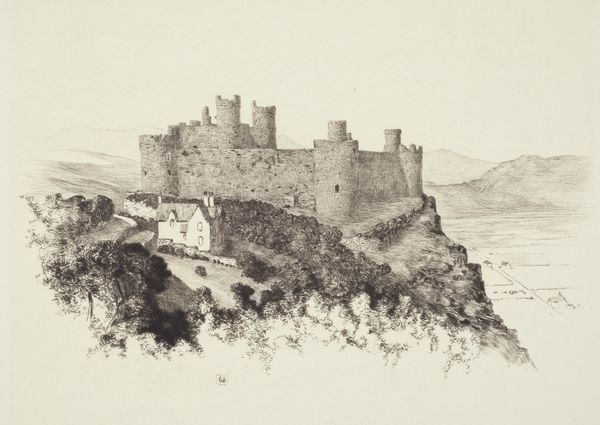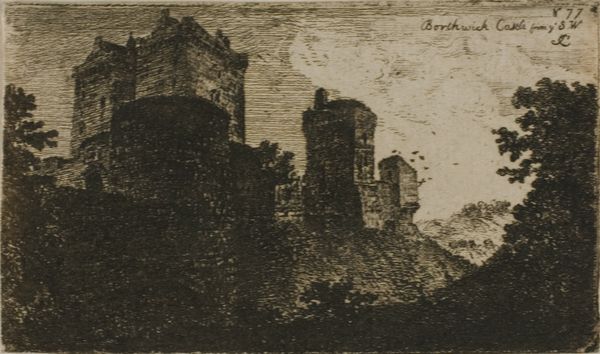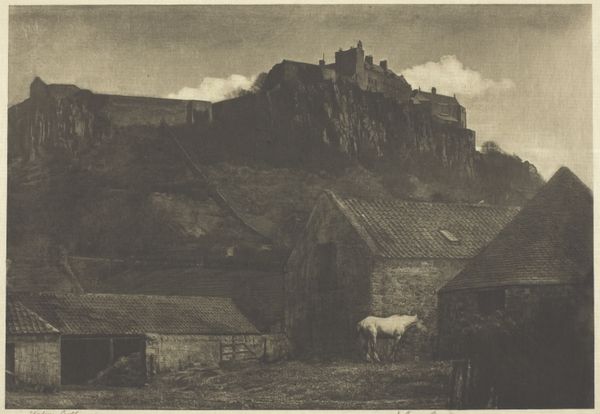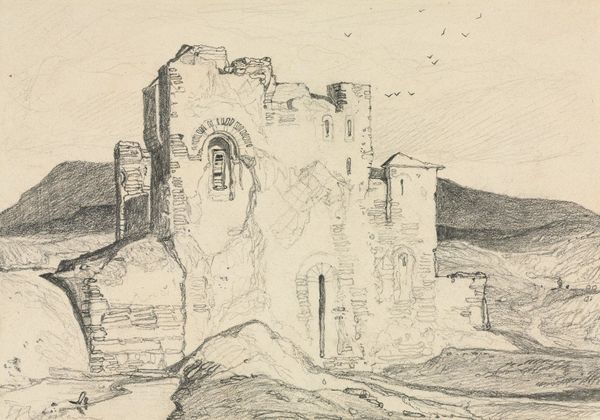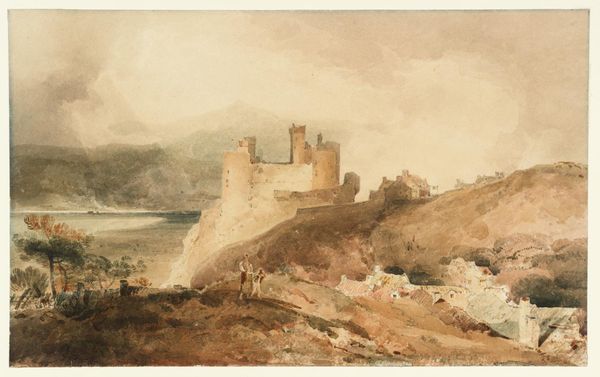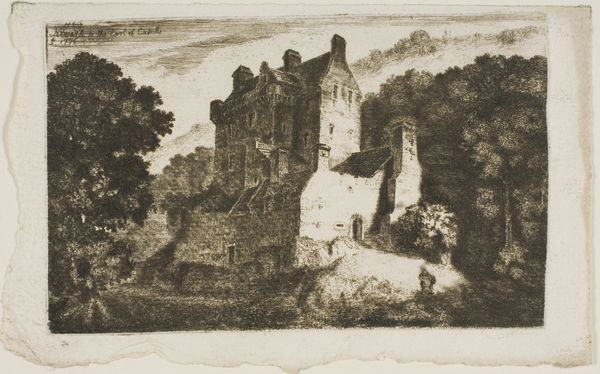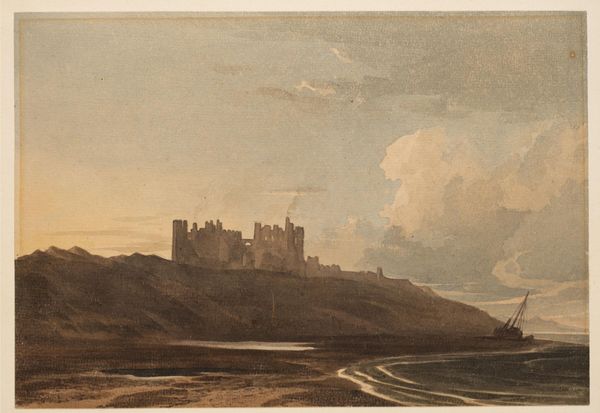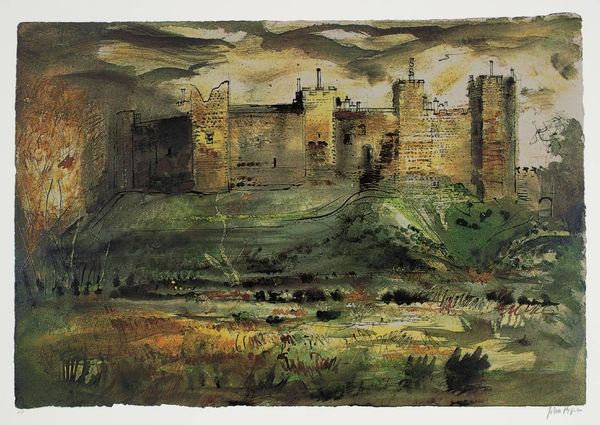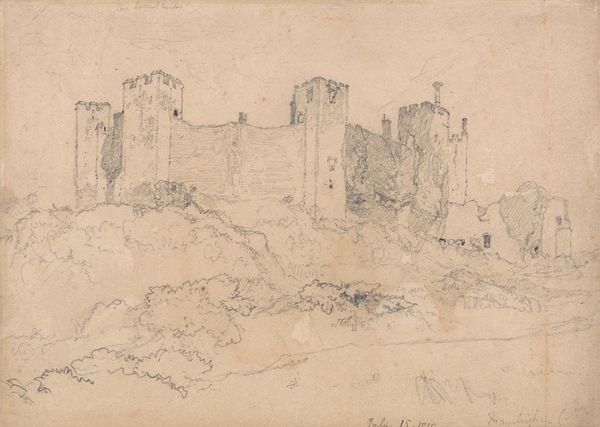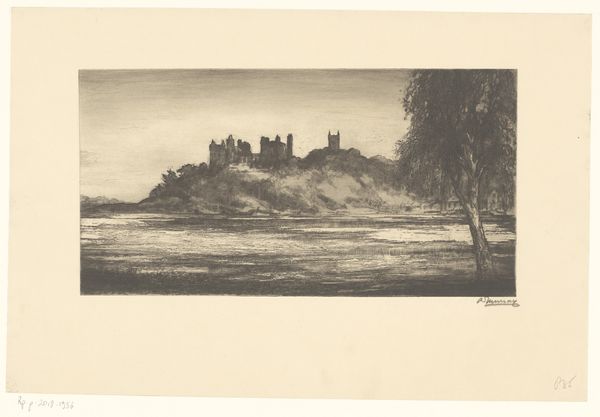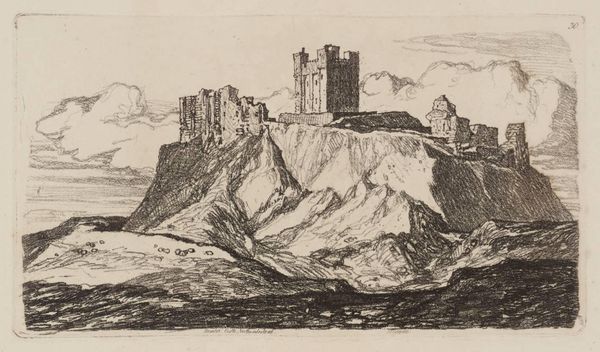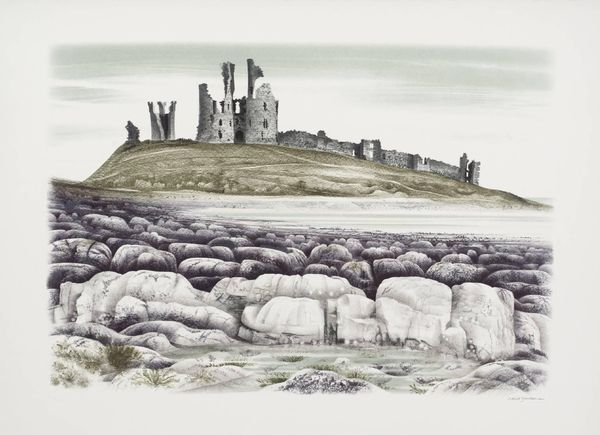
Dimensions: 6 1/8 x 8 5/16 in. (15.56 x 21.11 cm) (image)
Copyright: No Copyright - United States
Editor: This is "Harlech Castle," a gelatin-silver print made by George Davison around the turn of the 20th century. It has such a dreamy quality to it, almost like a memory. What do you see in this piece, focusing on its material aspects? Curator: For me, it’s impossible to ignore the process and the material manipulation that gives this photograph its power. Davison wasn’t just capturing an image; he was actively crafting it. Consider the gelatin-silver print— a relatively accessible medium at the time, yet he's using it to evoke something otherworldly. It makes me consider the accessibility and mass production versus the intent for fine art and beauty. How does the process influence your understanding? Editor: I suppose it's easy to look at a photo and think it’s a straightforward record, but knowing it’s a gelatin-silver print highlights the artistry. The choice of material shapes the final result, especially how it contributes to the photo's softness and tonal range, it blurs the distinction between photography and painting. What about the castle as a subject? Curator: Exactly! Think about what a castle *represents* and what the material might represent. Castles were places of work, social order and structure; gelatin silver prints are essentially an industrialized image production system which itself generates images related to working class or industrial themes, so is there an irony or conscious conflict presented? Do you think the photographic methods he's using are actually disrupting these power structures? Editor: That's fascinating, the connection between industrial production and this almost painterly, romantic vision. So, instead of just seeing a pretty picture, we can analyze the social and economic context embedded in the materials and the production process itself? Curator: Precisely. It allows us to consider not just what is depicted, but also how and *why* it was depicted in this way, using these materials, at that time. The material speaks volumes. Editor: I will certainly look differently at photography from now on! Focusing on production demystifies the artistic process while connecting it to broader cultural trends. Curator: Yes, it's about looking at the photograph as a material object, a product of labor, embedded within a specific historical and social context. Thank you for the insights, that's a fresh perspective.
Comments
No comments
Be the first to comment and join the conversation on the ultimate creative platform.
